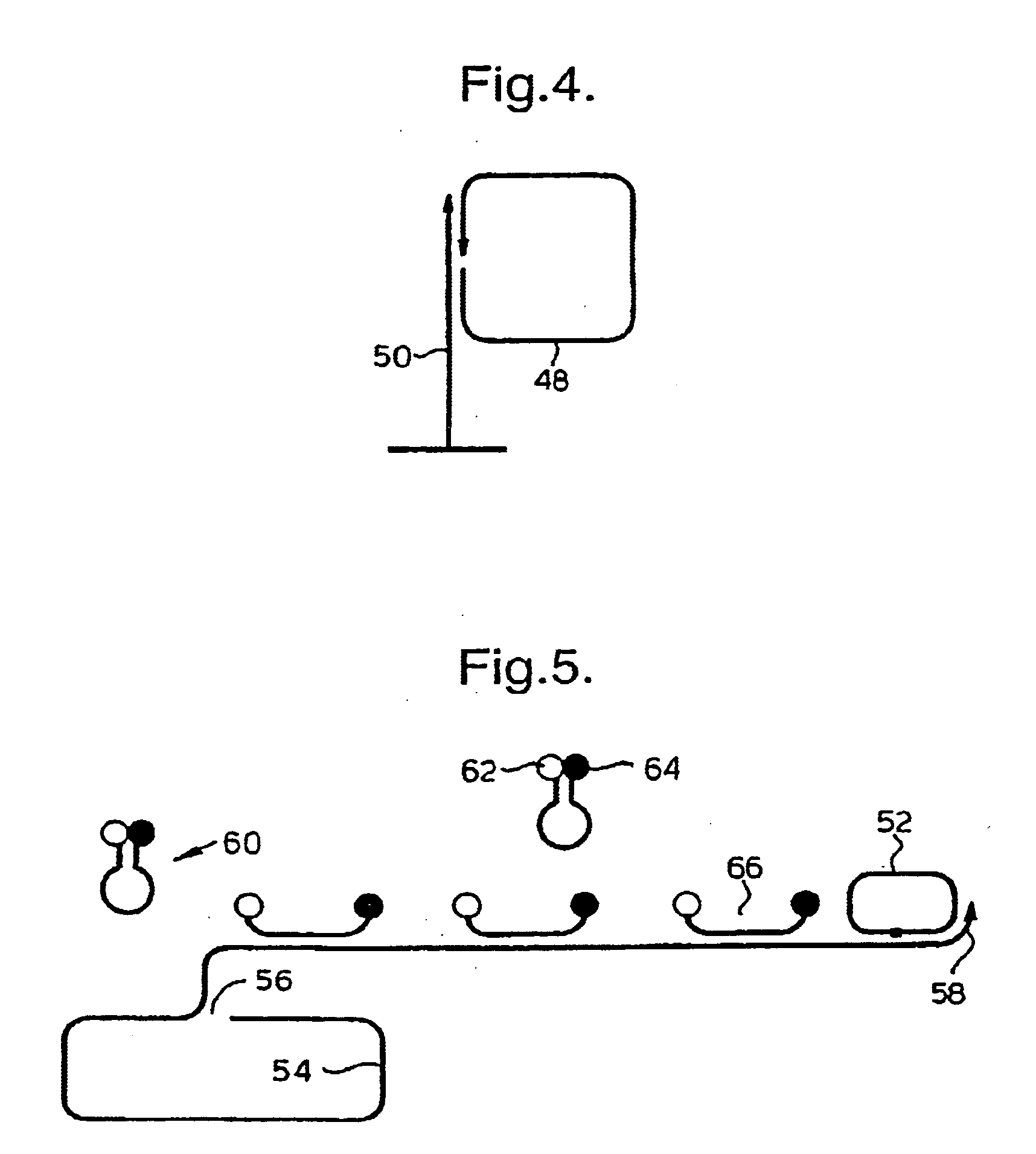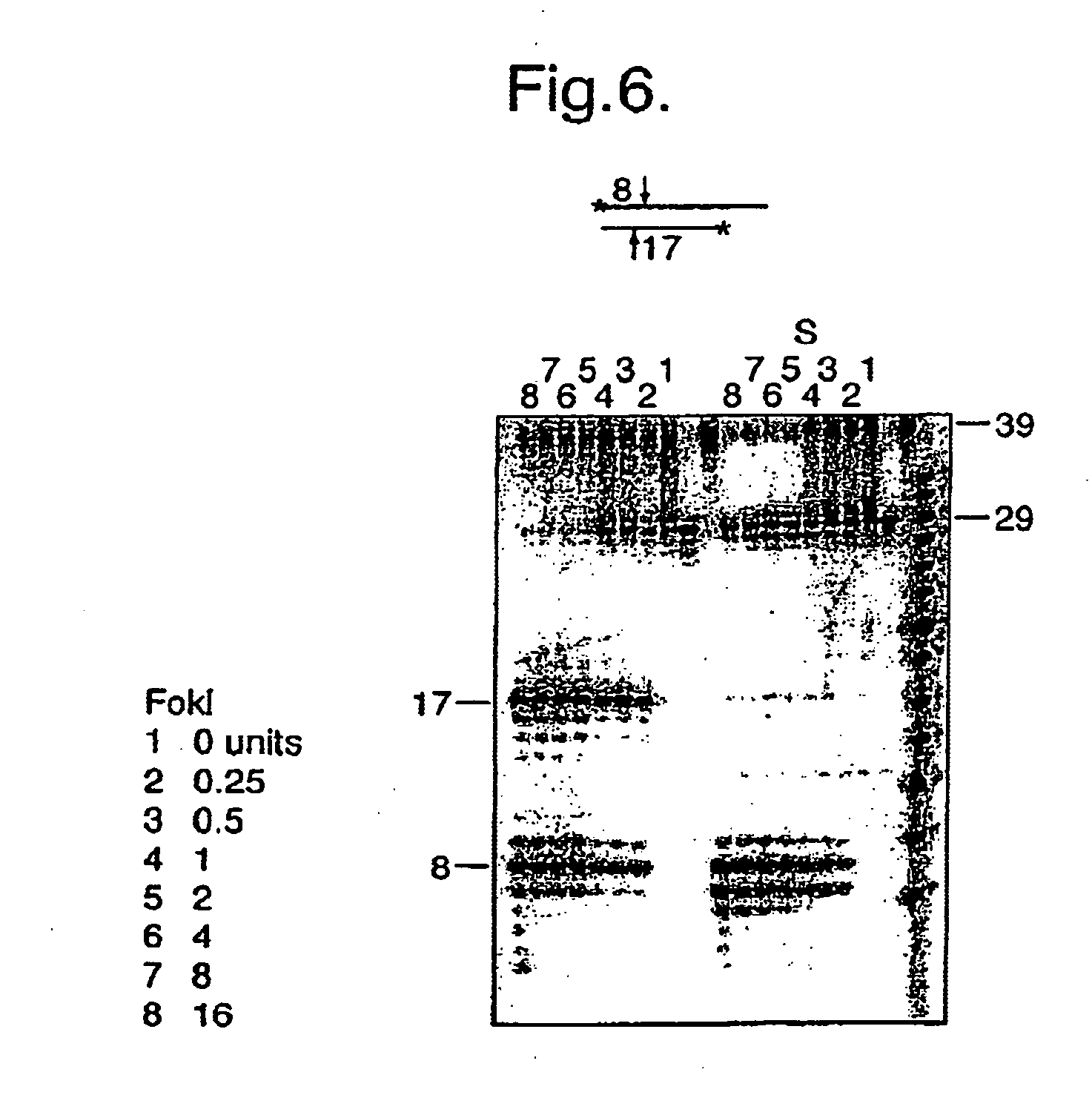Rolling circle replication of padlock probes
a technology of padlock probes and rolling circles, which is applied in the direction of microbiological testing/measurement, fermentation, biochemistry apparatuses and processes, etc., can solve the problems of rapid increase of spurious amplification products, difficulty in detecting spurious products, and difficulty in detecting circular nucleic acids, etc., to achieve the effect of enhancing the fluorescence of the fluorescent group
- Summary
- Abstract
- Description
- Claims
- Application Information
AI Technical Summary
Benefits of technology
Problems solved by technology
Method used
Image
Examples
example 2
Strand-Specific Cleavage Using FokI Followed by Phi29 Polymerisation (FIG. 7)
[0070] Here a branched substrate for restriction digestion was used.
[0071] The 56-mer is complementary to a 23-mer at its 5′-end and to a (radiolabelled) 71-mer at its 3′ end. The 23-mer includes the recognition sequence of the enzyme FokI, but is cleavage site is located across the branch. The sample shown in lane 3 is untreated. The sample in lane 1 was treated with the restriction enzyme, generating a shorter fragment of 33. In lane 4 the polymerase Phi29 and nucleotides had been present, with no consequences, compared to lane 3, as expected. Finally, in lane 2 restriction was followed by polymerisation. Only a small fraction of the cleavage products have been extended by a few nucleotides to fill in the 5′ overhang generated by restriction cleavage. This experiment demonstrates that cleavage across a branch is possible, as has been previously shown by Szybalski. The reason for the poor polymerisation ...
example 3
Strand-Specific Cleavage Using FokI and Protection by Phosphorothicates Followed by Phi29 Polymerisation (FIG. 8)
[0072] The experiment is similar to the previous one, except that in this experiment the 56-mer was protected from restriction cleavage by being modified with phosphorothioates. Lane 3: starting material. Lane 1: restriction cleaved. Lane 4: Addition of polymerase and nucleotides; most 56-mers remain unchanged (, although some seem to have been extended somehow as mentioned for the above experiment). Lane 2: Here most of the 33-mer cleavage products have been extended, copying the now uncleaved 56-mer, just as would be required to initiate a rolling circle replication by directing a cleavage reaction to the target strand for padlock recognition, allowing the target to prime a rolling-circle replication reaction.
example 4
Strand-Specific Cleavage by FokI and Protection by Phosphorothioates (FIG. 9)
[0073] A simpler variant of the preceding experiment, but with the 56-mer strand 5′ labelled with radioactive phosphate. The unprotected strand is cleaved as expected, but the protected one is cleaved farther away than normal, where it is unprotected, indicating that a larger sequence may have to be protected by being modified with phosphorothioates.
PUM
| Property | Measurement | Unit |
|---|---|---|
| temperature | aaaaa | aaaaa |
| temperature | aaaaa | aaaaa |
| pH | aaaaa | aaaaa |
Abstract
Description
Claims
Application Information
 Login to View More
Login to View More - R&D
- Intellectual Property
- Life Sciences
- Materials
- Tech Scout
- Unparalleled Data Quality
- Higher Quality Content
- 60% Fewer Hallucinations
Browse by: Latest US Patents, China's latest patents, Technical Efficacy Thesaurus, Application Domain, Technology Topic, Popular Technical Reports.
© 2025 PatSnap. All rights reserved.Legal|Privacy policy|Modern Slavery Act Transparency Statement|Sitemap|About US| Contact US: help@patsnap.com



